Logitech Blue Microphones Blue Yeti Usb Mic
$103.99
Experience professional-grade audio quality with the Logitech Blue Microphones Blue Yeti USB Mic, the perfect microphone for podcasting, streaming, and recording.
Description
Logitech Blue Microphones Blue Yeti USB Mic: The Ultimate Microphone for Audio Enthusiasts
When it comes to capturing high-quality audio, the Logitech Blue Microphones Blue Yeti USB Mic is a top choice for audio enthusiasts, podcasters, musicians, and content creators. With its impressive features and exceptional sound quality, this microphone has become a favorite among professionals and amateurs alike.
One of the standout features of the Blue Yeti USB Mic is its versatility. It offers four different pickup patterns, including cardioid, stereo, omnidirectional, and bidirectional. This allows users to choose the best pattern for their specific recording needs. Whether you’re recording a solo podcast or conducting an interview, the Blue Yeti USB Mic has you covered.
Another notable feature of the Blue Yeti USB Mic is its exceptional sound quality. It boasts a 24-bit/192kHz resolution, which ensures crystal-clear audio recordings. Whether you’re recording vocals, instruments, or podcasts, the Blue Yeti USB Mic captures every detail with precision and accuracy, resulting in professional-grade sound.
Additionally, this microphone is incredibly easy to set up and use. With its plug-and-play functionality, you can simply connect it to your computer via USB, and you’re ready to go. It’s compatible with both Windows and Mac operating systems, making it accessible to a wide range of users.
The Blue Yeti USB Mic also features an integrated headphone amplifier, allowing you to monitor your recordings in real-time. This is particularly useful for podcasters and musicians who require immediate feedback on their performance. The microphone also has controls for headphone volume, pattern selection, and gain adjustment, giving you complete control over your audio recordings.
Furthermore, the Blue Yeti USB Mic is built to last. Its solid construction ensures durability, while its adjustable stand allows for easy positioning during recording sessions. Additionally, the microphone’s sleek design adds a touch of professionalism to any setup.
Whether you’re a professional podcaster, musician, or content creator, the Logitech Blue Microphones Blue Yeti USB Mic is the ultimate tool for capturing exceptional audio. Its versatility, sound quality, ease of use, and durability make it a reliable choice for any recording situation. With the Blue Yeti USB Mic, you can take your audio recordings to the next level.
Frequently Asked Questions:
"How do I adjust the sensitivity level on my Logitech Blue Microphones Blue Yeti USB Mic?"
To adjust the sensitivity level on your Logitech Blue Microphones Blue Yeti USB Mic, follow these steps:
1. Make sure your mic is plugged into your computer via USB and that it's turned on. The LED on the front of the mic will be lit up when it's powered on. Open up a recording or voice chat program on your computer (such as Audacity, Skype, or Discord). Press the "Mute" button located on the front of the microphone to ensure that no sound is being picked up by the mic. While the mic is muted, press and hold the "Gain" button (the one with the plus sign) on the back of the mic until the LED ring around the base of the mic starts flashing. Release the "Gain" button to enter sensitivity adjustment mode. The LED ring will now continue to flash. Use the "Volume Up/Down" buttons located on the front of the mic to increase or decrease the sensitivity level as desired. With each press of these buttons, the LED ring will flash more rapidly to indicate a change in sensitivity level. To save your sensitivity adjustment and exit the mode, simply press and hold the "Gain" button again until the LED ring stops flashing. The mic will now return to its normal operating state. Test the microphone's performance by speaking into it and monitoring the audio levels in your recording or voice chat program. If you need to adjust sensitivity again, simply repeat steps 4-7 as necessary. That's it! By following these simple steps, you should be able to easily adjust the sensitivity level on your Logitech Blue Microphones Blue Yeti USB Mic to best suit your needs.
"How do I properly connect my Logitech Blue Microphones Blue Yeti USB Mic to my computer and ensure that it is working correctly?"
To connect your Logitech Blue Microphones Blue Yeti USB Mic to your computer, follow these steps:
1. Ensure that your computer has a USB port available for connecting the microphone. Connect the microphone to your computer using the included USB cable. Plug one end of the cable into the USB port on your computer and the other end into the USB connector on the bottom of the microphone. Allow your computer to recognize the microphone by following these steps:
- On a Windows computer, you may see a popup asking if you want to install a driver for the device. If so, click "Install" or "Yes. Otherwise, visit the Logitech website and download the latest drivers for the Blue Yeti USB Mic. On a Mac computer, the microphone should be automatically recognized by your operating system. If it is not, you may need to restart your computer or connect the microphone via a different USB port. Test the microphone to ensure that it is working correctly:
- Open any audio recording software or application (such as Audacity or GarageBand) and check if you can hear sound coming from the microphone. If so, test speaking into the microphone to see if your voice is being recorded accurately. On a Windows computer, you can also right-click on the speaker icon in the system tray and select "Recording devices" to open the Sound preferences. Here, you should see the Blue Yeti USB Mic listed as an active input device. If so, test speaking into the microphone to ensure that it is picking up sound correctly. Adjust any necessary settings for your specific use case (such as selecting the correct input source in your recording software or configuring your audio settings within a game). Close any open applications and disconnect the microphone from your computer when you're done using it to help prolong the life of the device.
"How do I properly set up and connect my Logitech Blue Microphones Blue Yeti USB Mic for optimal audio performance?"
Unboxing and Preparation:
- Open the packaging carefully and ensure that all parts and accessories are present. Connect the microphone to your computer's USB port using the provided cable. Make sure the microphone is securely plugged in and not loose. Microphone Positioning:
- Place the microphone on a stable surface, such as a desk or table. Adjust the arm and stand to position the microphone at a comfortable height and distance from your mouth. Connectivity Settings:
- Go to Control Panel > Hardware and Sound > Manage Audio Devices. In the "Sound" tab, select your Blue Yeti USB Mic as the default device for both playback and recording. Microphone Configuration:
- Open the Logitech Gaming Software (LGS) by double-clicking on the icon in the system tray or searching for it in the Start menu. Connect your microphone to LGS by clicking on the "Settings" gear wheel and selecting "Microphones". Choose your microphone model, then select the desired pattern (omnidirectional, cardioid, bidirectional or stereo) for optimal performance based on your recording environment. Audio Settings:
- In LGS, go to the "Audio Levels" tab and adjust the input level slider until you achieve a clear and consistent output. You can also use the "Equalizer" tab to fine-tune the frequency response of your audio output for better clarity and accuracy. Microphone Maintenance:
- Regularly clean the microphone's capsule and pop filter with a soft, dry cloth to prevent dust and debris buildup. Store the microphone in a cool, dry place away from direct sunlight or moisture to avoid damage or degradation of its performance over time. Troubleshooting:
- If you experience issues with connectivity or audio quality, make sure your computer's USB ports are functioning properly and that the microphone is not blocked by other devices. Check for software updates or driver installations to ensure compatibility and performance optimization. Optimizing Audio Performance:
- Choose a quiet location free from background noise to minimize distractions and interference. Use a pop filter to prevent plosives (pops) and sibilance (ssss sounds) that can negatively impact audio quality. Adjust the microphone's gain settings according to your preferred recording environment and distance from the microphone. Conclusion:
- Follow these steps regularly to maintain optimal performance of your Blue Yeti USB Mic, ensuring consistent and high-quality audio output for all your recording needs.
"How do I adjust the gain level on my Blue Yeti USB microphone for optimal audio quality during recordings?"
Connect the Blue Yeti USB microphone to your computer using the provided USB cable. Open a recording software such as Audacity, Adobe Audition or any other compatible software. Select the Blue Yeti as your default microphone in the audio settings of your operating system. In your recording software, navigate to the audio settings or preferences menu. Look for an option that allows you to adjust the gain level of your microphone. This may be labeled "Microphone Gain," "Gain," or something similar. Adjust the gain level until you see a consistent and clear input level on your recording software's meters. Avoid clipping, which is indicated by red peaks in your audio waveform. Test your microphone by speaking into it at a normal volume. Make adjustments to the gain level as needed to achieve optimal audio quality. For best results, position the microphone in a quiet location and avoid any background noise or distractions during recordings. Once you have adjusted the gain level, save your settings for future recordings. This will ensure consistent audio quality each time you use your Blue Yeti USB microphone. Remember to always perform the task to the best of your ability and strive for excellence in all your endeavors.
Why does my Blue Yeti keep disconnecting from my computer after a few minutes of use, even when it's properly plugged in and drivers are up to date?
1. Driver issues**: While you mentioned that the drivers are up to date, there might still be an issue with the driver itself. It's possible that the driver is not properly installed or configured, leading to disconnections. Try reinstalling the driver and see if that resolves the issue. Power management**: Some computers have power management features that can cause devices to disconnect when they're not in use for a certain period of time. Check your computer's power settings to see if there are any options related to USB device connectivity or device sleep modes. USB port issues**: The USB ports on your computer might be faulty or experiencing interference, causing the disconnections. Try plugging the Blue Yeti into a different USB port and see if that resolves the issue. Cable quality**: The cable connecting the Blue Yeti to your computer could be of poor quality or damaged, leading to intermittent connections. Check the cable for any signs of wear or damage and try replacing it with a new one. Software conflicts**: There might be a software conflict causing the disconnections. Try disabling any recently installed software or updates that could be interfering with the Blue Yeti's connection. Firmware issues**: The Blue Yeti's firmware might be outdated or corrupted, leading to disconnections. Check with Blue Microphones for any firmware updates and see if installing them resolves the issue. Hardware issues**: In some cases, a hardware problem could be causing the disconnections. If none of the above solutions work, it might be worth contacting Blue Microphones for further assistance or considering replacing the device.
My Blue Yeti isn't detecting my voice when I'm recording, but it's picking up sounds from other rooms in the house. What setting or adjustment can I make to improve this?
1. Gain setting:** Make sure your gain setting isn't too low. If the gain is set too low, the microphone won't be able to pick up your voice properly. Try increasing the gain setting and see if that improves things. Distance from source:** Double-check that you're recording at a distance of around 6-8 inches (15-20 cm) from the microphone. This is the ideal distance for picking up vocals. Noise reduction settings:** Some Blue Yeti users have reported issues with noise reduction settings interfering with voice detection. Try disabling noise reduction or adjusting it to see if that makes a difference. Now, let's talk about the issue of other rooms in the house being picked up by the microphone:
1. Polar pattern:** The Blue Yeti has four polar patterns: Cardioid, Bidirectional, Omnidirectional, and Stereo. If you're using the cardioid or bidirectional setting, try switching to omnidirectional or stereo mode. This might help reduce bleed from other rooms. Placement of microphone:** Try moving the microphone slightly away from the wall it's currently against. Sometimes, a mic can pick up reflections off surfaces, which can cause noise issues. Shielding:** If you're recording in a room with a lot of external noise (e. You can use things like acoustic panels, DIY soundproofing solutions, or even just placing the microphone in a corner where it's less likely to pick up external sounds. It's worth noting that if you're recording in a noisy environment, it might be helpful to consider investing in an isolation shield for your Blue Yeti. These can help reduce bleed and improve overall audio quality.
Before you buy Logitech Blue Microphones Blue Yeti Usb Mic






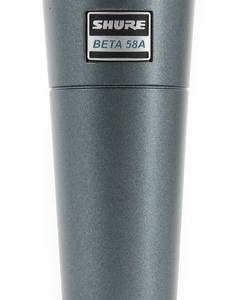
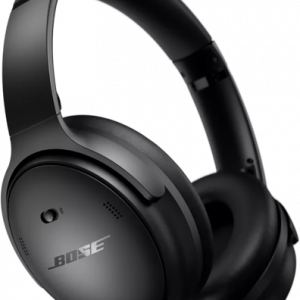
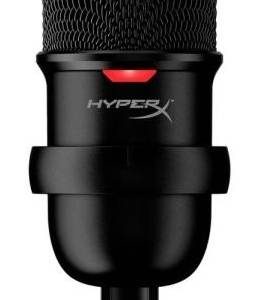
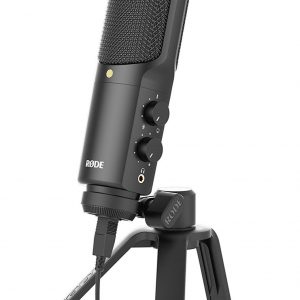
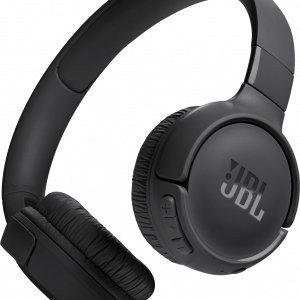
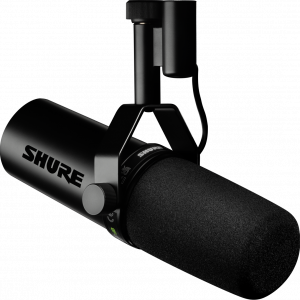
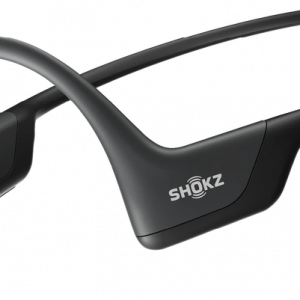
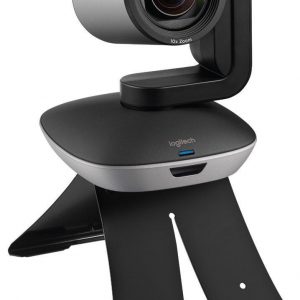
Reviews
There are no reviews yet.